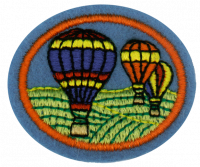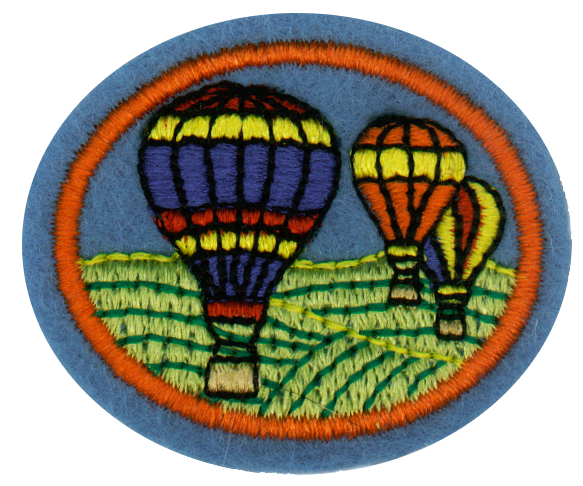Difference between revisions of "AY Honors/Hot Air Balloons/Requirements"
Jomegat bot (talk | contribs) (Bot: Automated import of articles *** existing text overwritten ***) |
m |
||
| Line 1: | Line 1: | ||
{{HonorSubpage}} | {{HonorSubpage}} | ||
| − | |||
| − | |||
<section begin=Body /> | <section begin=Body /> | ||
| − | + | <b>1. <section begin=req1 /><noinclude><translate></noinclude>State the role each of the following played in the development of flying balloons. | |
| − | <b>1. <section begin=req1 /><noinclude><translate></noinclude>State the role each of the following played in the development of flying balloons. | ||
<noinclude></translate></noinclude><section end=req1 /></b> | <noinclude></translate></noinclude><section end=req1 /></b> | ||
| Line 12: | Line 9: | ||
<noinclude></translate></noinclude><section end=req1a /></b> | <noinclude></translate></noinclude><section end=req1a /></b> | ||
| − | :<b>b. <section begin=req1b /><noinclude><translate></noinclude>Jean Francois Pilatre de Rozier and Francois Laurent Marquis d'Arlandes. | + | :<b>b. <section begin=req1b /><noinclude><translate></noinclude>Jean Francois Pilatre de Rozier and Francois Laurent Marquis d'Arlandes. |
<noinclude></translate></noinclude><section end=req1b /></b> | <noinclude></translate></noinclude><section end=req1b /></b> | ||
| − | :<b>c. <section begin=req1c /><noinclude><translate></noinclude>[[w:Jacques_Alexandre_Cesar_Charles|Jacques Alexandre Cesar Charles]] and Nicolas Louis Robert. | + | :<b>c. <section begin=req1c /><noinclude><translate></noinclude>[[w:Jacques_Alexandre_Cesar_Charles|Jacques Alexandre Cesar Charles]] and Nicolas Louis Robert. |
<noinclude></translate></noinclude><section end=req1c /></b> | <noinclude></translate></noinclude><section end=req1c /></b> | ||
| − | :<b>d. <section begin=req1d /><noinclude><translate></noinclude>[[w:Ben_Abruzzo|Ben L. Abruzzo]], [[w:Maxie_Anderson|Maxie L. Anderson]], and Larry Newman | + | :<b>d. <section begin=req1d /><noinclude><translate></noinclude>[[w:Ben_Abruzzo|Ben L. Abruzzo]], [[w:Maxie_Anderson|Maxie L. Anderson]], and Larry Newman |
<noinclude></translate></noinclude><section end=req1d /></b> | <noinclude></translate></noinclude><section end=req1d /></b> | ||
| − | :<b>e. <section begin=req1e /><noinclude><translate></noinclude>[[w:Bertrand_Piccard|Bertrand Piccard]] and [[w:Brian_Jones_(aeronaut)|Brian Jones]] | + | :<b>e. <section begin=req1e /><noinclude><translate></noinclude>[[w:Bertrand_Piccard|Bertrand Piccard]] and [[w:Brian_Jones_(aeronaut)|Brian Jones]] |
<noinclude></translate></noinclude><section end=req1e /></b> | <noinclude></translate></noinclude><section end=req1e /></b> | ||
| − | <b>2. <section begin=req2 /><noinclude><translate></noinclude>Cite the principle of Archimedes, and briefly describe how it applies to each of the following: | + | <b>2. <section begin=req2 /><noinclude><translate></noinclude>Cite the principle of Archimedes, and briefly describe how it applies to each of the following: |
<noinclude></translate></noinclude><section end=req2 /></b> | <noinclude></translate></noinclude><section end=req2 /></b> | ||
| Line 36: | Line 33: | ||
<noinclude></translate></noinclude><section end=req2c /></b> | <noinclude></translate></noinclude><section end=req2c /></b> | ||
| − | <b>3. <section begin=req3 /><noinclude><translate></noinclude>Using a textbook of Chemistry, or a reference book of scientific tables, draw up a simple table showing the composition of air by weight and by volume. | + | <b>3. <section begin=req3 /><noinclude><translate></noinclude>Using a textbook of Chemistry, or a reference book of scientific tables, draw up a simple table showing the composition of air by weight and by volume. |
<noinclude></translate></noinclude><section end=req3 /></b> | <noinclude></translate></noinclude><section end=req3 /></b> | ||
| − | <b>4. <section begin=req4 /><noinclude><translate></noinclude>Draw up a simple table showing a comparison of the atomic number, atomic weight, and density of hydrogen, helium, nitrogen, and oxygen. | + | <b>4. <section begin=req4 /><noinclude><translate></noinclude>Draw up a simple table showing a comparison of the atomic number, atomic weight, and density of hydrogen, helium, nitrogen, and oxygen. |
<noinclude></translate></noinclude><section end=req4 /></b> | <noinclude></translate></noinclude><section end=req4 /></b> | ||
| − | <b>5. <section begin=req5 /><noinclude><translate></noinclude>Name two gases that are used in flying gas filled balloons. | + | <b>5. <section begin=req5 /><noinclude><translate></noinclude>Name two gases that are used in flying gas filled balloons. |
<noinclude></translate></noinclude><section end=req5 /></b> | <noinclude></translate></noinclude><section end=req5 /></b> | ||
| − | <b>6. <section begin=req6 /><noinclude><translate></noinclude>Explain how heat/temperature affect the density of air, and how this applies to flying hot air balloons. | + | <b>6. <section begin=req6 /><noinclude><translate></noinclude>Explain how heat/temperature affect the density of air, and how this applies to flying hot air balloons. |
<noinclude></translate></noinclude><section end=req6 /></b> | <noinclude></translate></noinclude><section end=req6 /></b> | ||
| − | <b>7. <section begin=req7 /><noinclude><translate></noinclude>Explain the role of each of the following in the structure and flying of a hot air balloon. | + | <b>7. <section begin=req7 /><noinclude><translate></noinclude>Explain the role of each of the following in the structure and flying of a hot air balloon. |
<noinclude></translate></noinclude><section end=req7 /></b> | <noinclude></translate></noinclude><section end=req7 /></b> | ||
| − | <b>8. <section begin=req8 /><noinclude><translate></noinclude>Name two materials that may be used for the envelope of a hot air balloon, and compare the advantages each accords because of its properties. | + | <b>8. <section begin=req8 /><noinclude><translate></noinclude>Name two materials that may be used for the envelope of a hot air balloon, and compare the advantages each accords because of its properties. |
<noinclude></translate></noinclude><section end=req8 /></b> | <noinclude></translate></noinclude><section end=req8 /></b> | ||
| − | <b>9. <section begin=req9 /><noinclude><translate></noinclude>Describe how flying balloons have served a useful function in | + | <b>9. <section begin=req9 /><noinclude><translate></noinclude>Describe how flying balloons have served a useful function in |
<noinclude></translate></noinclude><section end=req9 /></b> | <noinclude></translate></noinclude><section end=req9 /></b> | ||
| Line 63: | Line 60: | ||
<noinclude></translate></noinclude><section end=req9b /></b> | <noinclude></translate></noinclude><section end=req9b /></b> | ||
| − | <b>10. <section begin=req10 /><noinclude><translate></noinclude>At what time of the day do most sport balloon flights take place? Why? | + | <b>10. <section begin=req10 /><noinclude><translate></noinclude>At what time of the day do most sport balloon flights take place? Why? |
<noinclude></translate></noinclude><section end=req10 /></b> | <noinclude></translate></noinclude><section end=req10 /></b> | ||
| − | <b>11. <section begin=req11 /><noinclude><translate></noinclude>Describe how a pilot controls the vertical movement of | + | <b>11. <section begin=req11 /><noinclude><translate></noinclude>Describe how a pilot controls the vertical movement of |
<noinclude></translate></noinclude><section end=req11 /></b> | <noinclude></translate></noinclude><section end=req11 /></b> | ||
| Line 72: | Line 69: | ||
<noinclude></translate></noinclude><section end=req11a /></b> | <noinclude></translate></noinclude><section end=req11a /></b> | ||
| − | :<b>b. <section begin=req11b /><noinclude><translate></noinclude>A gas filled balloon | + | :<b>b. <section begin=req11b /><noinclude><translate></noinclude>A gas filled balloon |
<noinclude></translate></noinclude><section end=req11b /></b> | <noinclude></translate></noinclude><section end=req11b /></b> | ||
| − | <b>12. <section begin=req12 /><noinclude><translate></noinclude>Describe how a pilot controls the lateral or horizontal movement of a flying balloon. | + | <b>12. <section begin=req12 /><noinclude><translate></noinclude>Describe how a pilot controls the lateral or horizontal movement of a flying balloon. |
<noinclude></translate></noinclude><section end=req12 /></b> | <noinclude></translate></noinclude><section end=req12 /></b> | ||
| − | <b>13. <section begin=req13 /><noinclude><translate></noinclude>Build to completion one model hot air balloon ( or two if working in pairs ). | + | <b>13. <section begin=req13 /><noinclude><translate></noinclude>Build to completion one model hot air balloon (or two if working in pairs). |
<noinclude></translate></noinclude><section end=req13 /></b> | <noinclude></translate></noinclude><section end=req13 /></b> | ||
<section begin=challenge /> | <section begin=challenge /> | ||
| − | <b>14. <section begin=req14 /><noinclude><translate></noinclude>Successfully launch, fly, and recover the model hot air balloon(s) which you have built. | + | <b>14. <section begin=req14 /><noinclude><translate></noinclude>Successfully launch, fly, and recover the model hot air balloon(s) which you have built. |
<noinclude></translate></noinclude><section end=req14 /></b> | <noinclude></translate></noinclude><section end=req14 /></b> | ||
<section end=challenge /> | <section end=challenge /> | ||
Revision as of 12:54, 28 April 2021
1. State the role each of the following played in the development of flying balloons.
- a. Joseph Michel Montgolfier and Jacques-Etienne Montgolfier
- b. Jean Francois Pilatre de Rozier and Francois Laurent Marquis d'Arlandes.
- c. Jacques Alexandre Cesar Charles and Nicolas Louis Robert.
- d. Ben L. Abruzzo, Maxie L. Anderson, and Larry Newman
- e. Bertrand Piccard and Brian Jones
2. Cite the principle of Archimedes, and briefly describe how it applies to each of the following:
- a. A piece of cork floating in a bowl of water
- b. A ship floating in the ocean
- c. A hot air balloon floating in the atmosphere
3. Using a textbook of Chemistry, or a reference book of scientific tables, draw up a simple table showing the composition of air by weight and by volume.
4. Draw up a simple table showing a comparison of the atomic number, atomic weight, and density of hydrogen, helium, nitrogen, and oxygen.
5. Name two gases that are used in flying gas filled balloons.
6. Explain how heat/temperature affect the density of air, and how this applies to flying hot air balloons.
7. Explain the role of each of the following in the structure and flying of a hot air balloon.
8. Name two materials that may be used for the envelope of a hot air balloon, and compare the advantages each accords because of its properties.
9. Describe how flying balloons have served a useful function in
- a. Military campaigns
- b. Scientific research
10. At what time of the day do most sport balloon flights take place? Why?
11. Describe how a pilot controls the vertical movement of
- a. A hot air balloon
- b. A gas filled balloon
12. Describe how a pilot controls the lateral or horizontal movement of a flying balloon.
13. Build to completion one model hot air balloon (or two if working in pairs).
14. Successfully launch, fly, and recover the model hot air balloon(s) which you have built.


